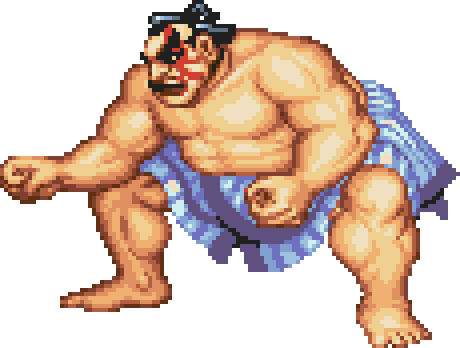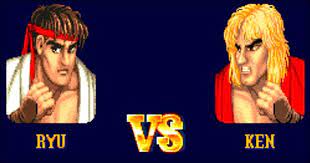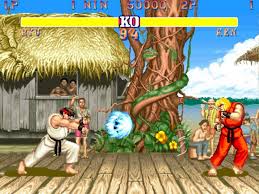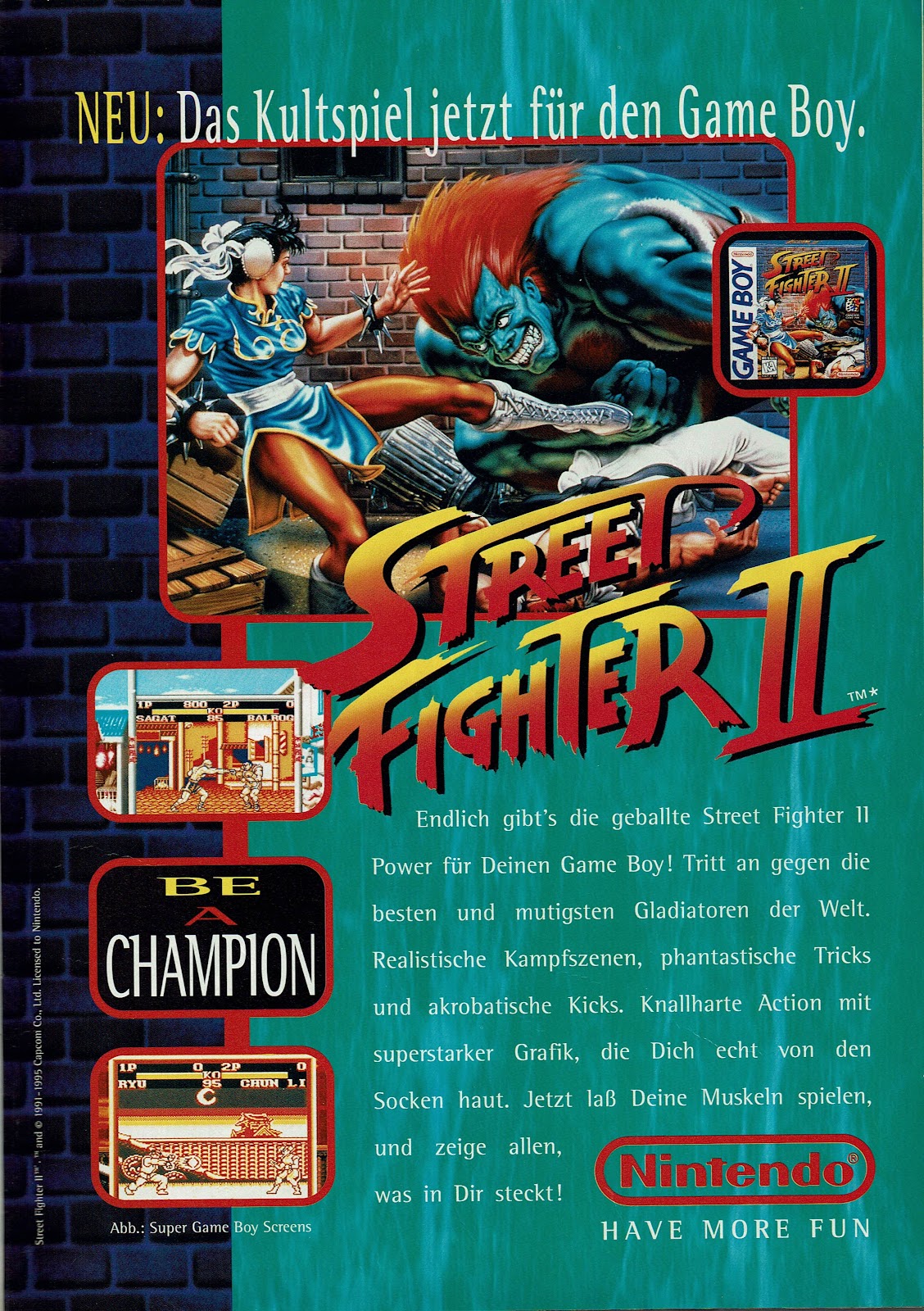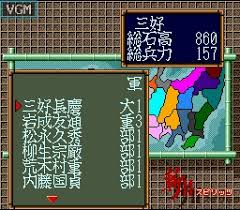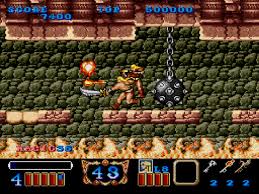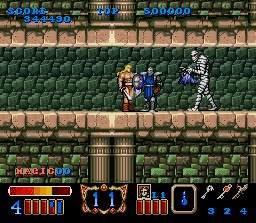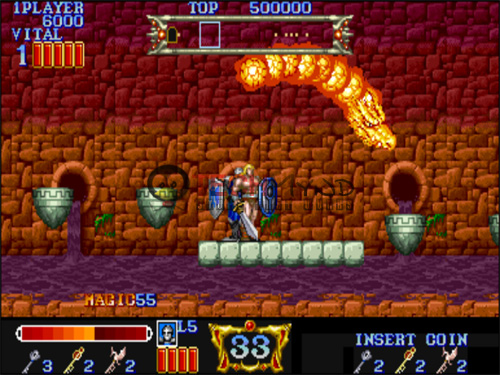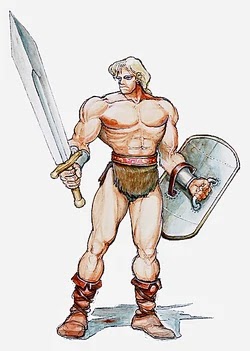The first game was released in 1987, and was a game where you controlled Ryu only (Ryu and Ken in two player). You did the typical fight around the world style gameplay, ending with a duel against the master of Muay Thai himself, Sagat. This final confrontation sets up the rivalry between the two, as Ryu gives Sagat his wicked chest scar at the end of the game. The first game is very clunky (no combos afterall), and wouldn't let you play as any of its other characters; aside from Ryu and Ken, the only other characters I recognize from later entries are Sagat and Birdie.
This first game didn't perform very well, but they noticed that the version of the arcade cabinet that used the six button fighting game format (weak, medium, and strong punches and kicks) performed much better in sales at arcades. Capcom executives realized that there was an idea for a good game buried in here, and with the popularity of Final Fight, realized that there could be an appetite for this "fighting" genre, especially in the United States. Development for the game took about 2 years and several million dollars, with a team of 40 people working on it; that is a pretty staggering amount of time, money, and people for a product back then, but the polish and effort shows in the arcade release. I have a personal opinion that Capcom knew they were onto something big when developing this.
Quality sprites and animation was a big selling point of this game; backed by the CPS-1 hardware; there are wonderfully animated and busy background scrawls to each stage, characters with varied and clear animation to their various movements (readability is a huge part of the fighting genre), and all of this in a distinct and cohesive visual aesthetic. It is clear why these original eight characters have popped up in almost every entry past this one; their designs are iconic for a reason.
The Roster
Ryu- The main character of the series and hailing from Japan. He is a wandering martial artist who lives on the road and seeks to improve his skills. He is practices karate and is arguably the easiest character to pick up and use. His moveset is versatile and he is great at zoning opponents and blocking air attacks. His arena is the top of a pagoda castle at twilight.
Ken- He is a sprite swap of Ryu and has some minor differences that have become more distinct as more entries in the series have come about. He hails from the United State, and is a longtime best friend and friendly rival of Ryu, having practiced under the same master.
E.Honda- Edmond Honda is a sumo from Japan, and my personal favorite character in the series. He is a slower character who is strongest when he can bully and push the opponent. He has a fun "thousand slap" attack and can launch himself across the screen, similar to Raiden in Mortal Kombat. His arena is a really fun Japanese bathhouse.
Blanka- hailing from Brazil, Blanka is a green skin red haired monster man who was experimented on by Shadaloo. This has given him apeman like mobility and strength, as well as the ability to generate electricity and shock opponents. He is a fun character to pick-up, and is relatively well balanced.
Guile- Guile is a air force soldier from the US who has an amazing flat top and a personal grudge against M.Bison for killing his compatriots. My brother was pretty amazing with Guile, who's anti-air spin kick and sonic boom attack made him pretty lethal. You fight him on an airforce base, and his theme is lowkey the best.
Chun-Li- Hailing from China, Chun-li is the only female fighter who has lethal legs for days. You fight her in a Chinese marketplace, and is arguably one of the most iconic characters aside Ken and Ryu. I am pretty terrible at fighting Chun-Li, but to be fair I am pretty terrible at this game in general.
Zangief- The Russian bear! A musclebound Russian soldier who is an expert grappler and wrestler (and who has become a gay gaming icon, though this has never been confirmed). Zangief functions as a tank who eats damage to be able to lay his meaty hands upon his opponent, whereupon he will atomic head-drop his opponent into oblivion. You fight him in a Russian spark factory.
Dhalsim- the man who has turned Yoga into a martial art, this Indian guru has stretchable limbs, teleportation abilities, and can breath fire. He is a really fun character who is really slow. You fight him in this really cool palace interior with white elephants all around.
The game also has four CPU boss characters that you only get to play as in later entries in this series (oh yeah there are like four SNES Street Fighter IIs).
Balrog- a boxer from the US who is modeled after Mike Tyson. He hits brutally hard and is lethal if you let him get close. You fight him on the Vegas strip.
Vega- a masked assassin with a Wolverine claw on one hand. You fight him in Spain in an underground fight club. Vega can climb on the walls, is super fast, and can unleash combos quite easily. He is a wall for many early players.
Sagat- Ryu's rival returns! A Muay Thai master whom you fight in Thailand. He is super tall, hits hard, and has incredible reach. A pretty fun design and a tough fight.
M.Bison- a bulky man in a military outfit, and the head of Shadaloo. You fight him in a temple. He has some mystical power known as the "psycho power" which allows him to shoot across the stage and fire energy. He is really fast and unrelenting in his attacks, appropriate for a final boss.
Gameplay
The game starts with you picking your fighter. Your fighter then globe trots around the world to fight with the other characters in the roster; the presentation it must be noted, is really top-notch with your plane flying from your character's homeland to their opponents. Once you have defeated the other seven characters, you then fight the four boss characters. Once you beat them, you get your character's short but sweet ending.
The battles themselves are stock standard for what we know now as a fighting game: you have to win two out of three rounds by wiping out your opponents lifebar, and must do this in 99 seconds. The fights are on a 2D plane, where your fighters can only move forward and back. You can attack with a weak punch, hard punch, weak kick, hard kick, and grab attacks, as well as special moves that require combinations of movement and button presses. While it wasn't intentional in the original design of the game, these attacks can be linked together in order to make combos, or uninterrupted strings of attacks that deal heavy amounts of damage. Now you can also block attacks, so the balance of finding openings in your opponents guard, as well as timing your blocks, is key to winning battles.
The game has the car busting mini-game where you must demolish the car in a set amount of time from Final Fight about halfway through the campaign. A welcome diversion halfway through the game.
Even now, the game is really playable, if much slower than what most fighting games, even Street Fighter games, are nowadays. Further iterations of this game do add to the roster of characters, as well as make the game much faster to play. I would say the biggest drawback of this game is that it is missing some of these fun bells and whistles: no rage mode, counters, super attacks, tag team, or really anything to spice it up. This was before all of those fighting game innovations. Still, it's pretty darn fun, and the presentation is gorgeous for an SNES game.
Music
The music in this game is quite awesome.
Art, Ads
Final Verdict
I mean, was there any chance that this game wouldn't be a strong recommendation? Are there better versions of this same game? Yes, but it is still pretty darn good. I highly recommend picking this one up!




